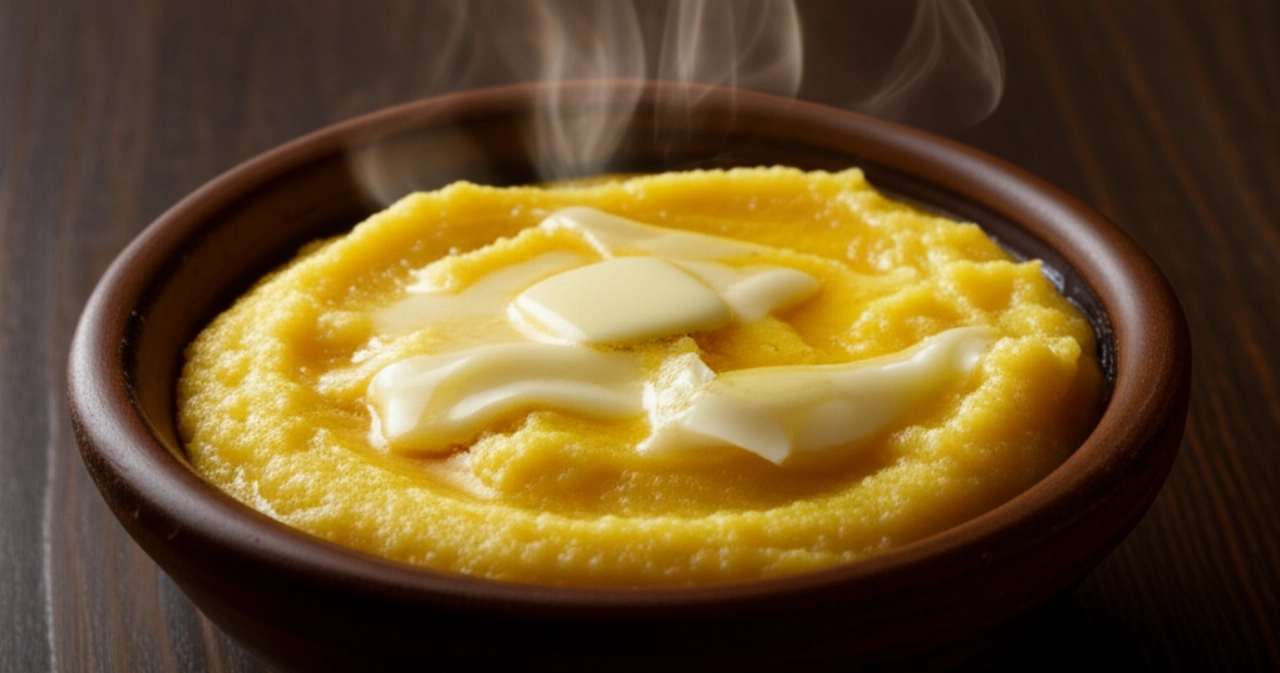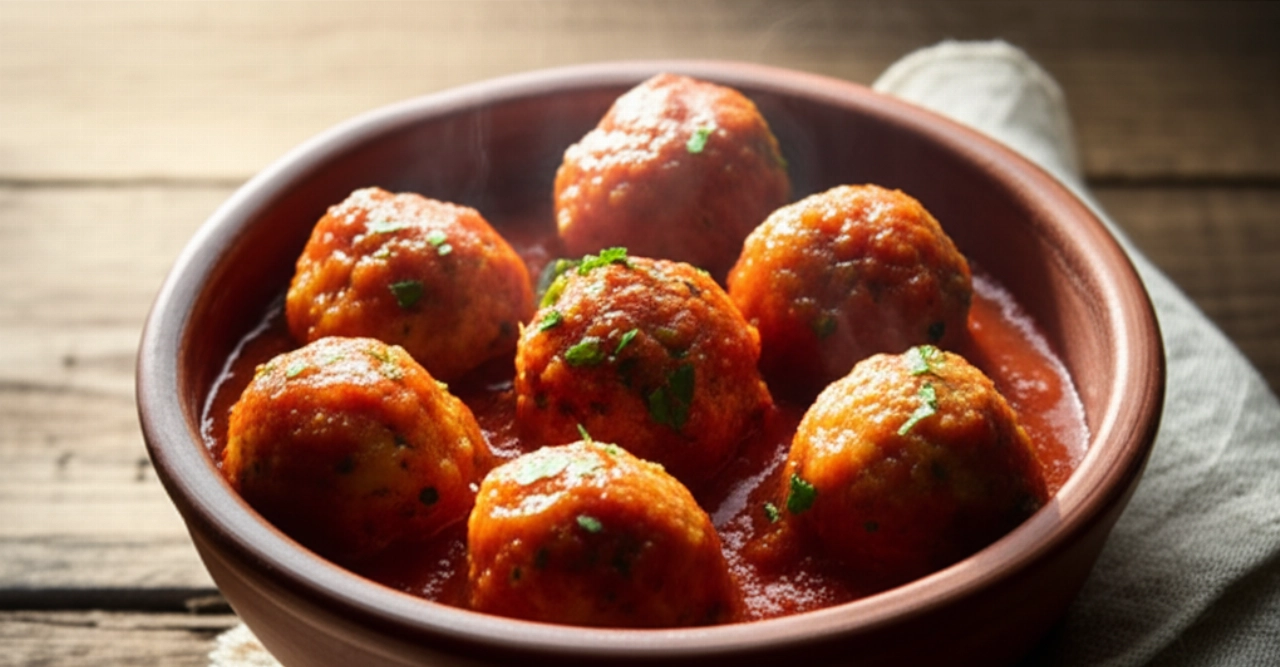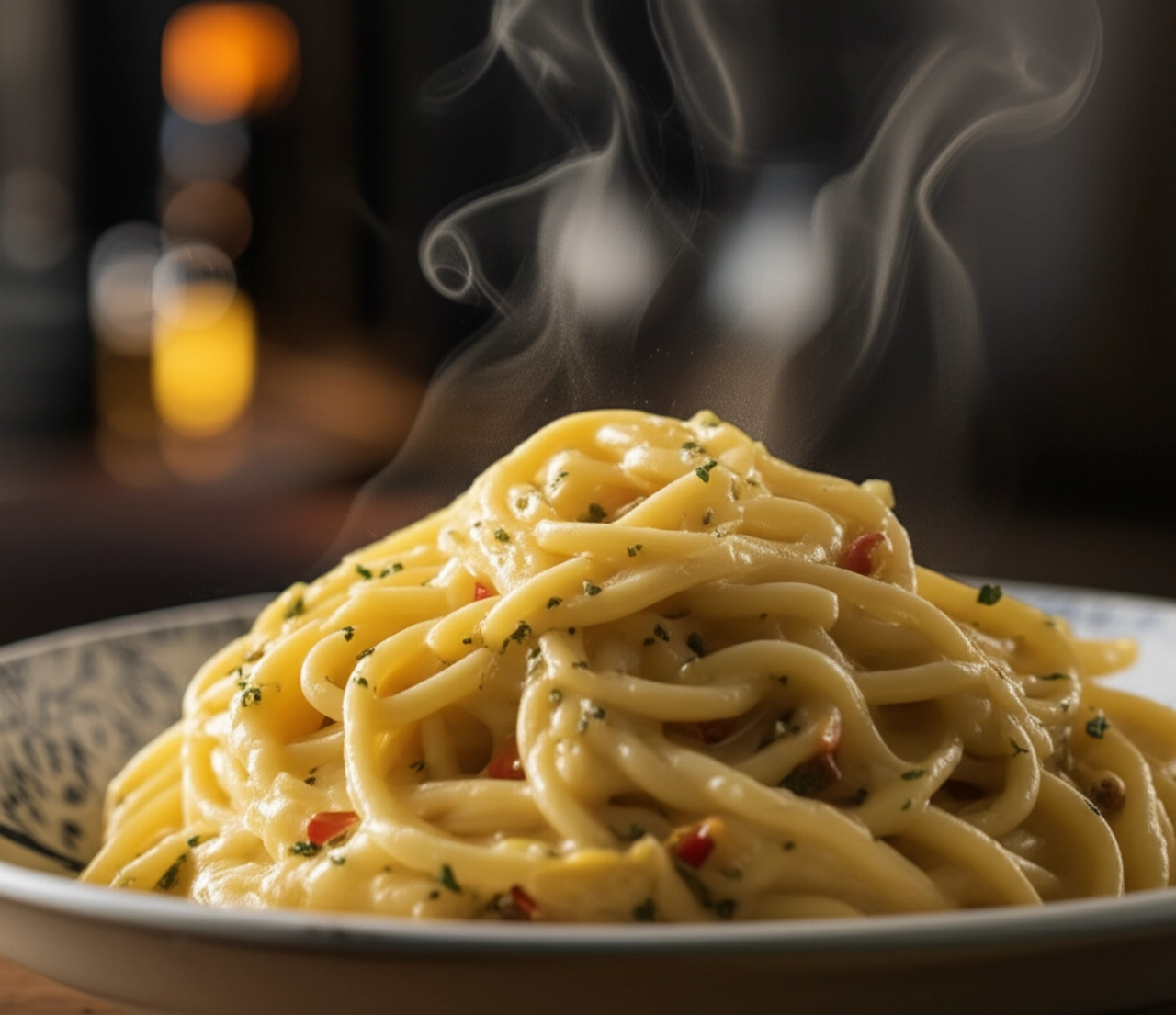Dreaming of bringing to your table a Polenta Taragna so enveloping and creamy it warms your heart and soul, with that unmistakable scent of mountains and melted cheese? Imagine its velvety texture, the intense flavor that takes you back to alpine refuges and grandmothers' laden tables.
But too often the result is lumpy, bland polenta that doesn't bind well with the cheese, leaving you with a sense of frustration and the feeling of having wasted precious time and ingredients. Finding the right recipe, one that guarantees success and authenticity, seems like a real challenge.
Make yourself comfortable. On this page, you won't just find a list of ingredients, but the definitive guide, full of tricks and tips, to prepare the most authentic and delicious Polenta Taragna you've ever tasted. Success is guaranteed, and you'll feel as if my grandmother is by your side, ready to reveal every secret. Here you'll feel at home, and your Polenta Taragna will be a masterpiece.
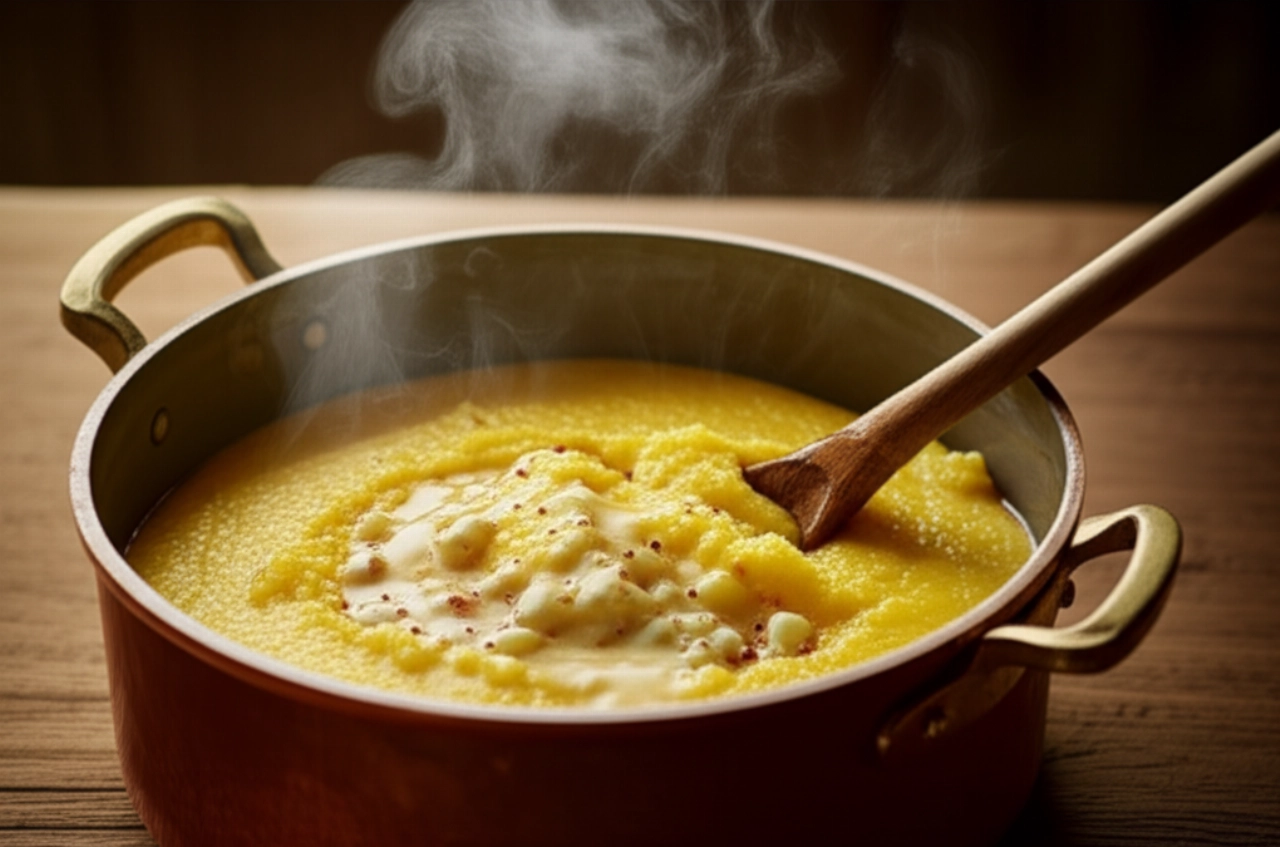
Authenticity and Perfect Creaminess: Our Secret for Polenta Taragna
The true secret to a textbook Polenta Taragna lies not only in the ingredients but in technique and patience. Our promise is clear: no more lumpy or bland polenta! I'll guide you step by step to achieve an incredibly creamy and flavorful Polenta Taragna, with real Branzi cheese (or a worthy substitute), just like they make it in the mountains, with no risk of error. Get ready for guaranteed success!

Ingredients for a Dream Polenta Taragna: The Choice That Makes the Difference
It's not just a simple list, but a well-thought-out selection. Each ingredient plays a fundamental role in the success of your dish.
- Coarse Cornmeal (Bramata): This is the base of the polenta, giving it structure. Choose good quality, perhaps stone-ground, for a more rustic and authentic flavor.
- Buckwheat Flour: The ingredient that distinguishes Polenta Taragna from others. It gives it that dark color, slightly bitter taste, and unique consistency. You can't do without it!
- Branzi Cheese (or Casera/Fontina): This is the heart of Taragna. Branzi, typical of Val Brembana, is a semi-fat, cooked-paste cheese with a sweet and slightly aromatic flavor that melts divinely. If you can't find it, a good Casera or Fontina DOP are excellent alternatives, provided they are cheeses that melt well and have a distinct but not too overpowering flavor.
- Quality Butter: Good butter, perhaps from an alpine pasture, adds creaminess and an unmistakable aroma. Don't skimp on quality; it truly makes a difference.
- Water (or Vegetable/Meat Broth): Water is the most traditional choice, but a good broth can further enrich the flavor. Make sure it's boiling when you add the flours.
- Coarse Salt: Essential for flavoring the polenta from the start.
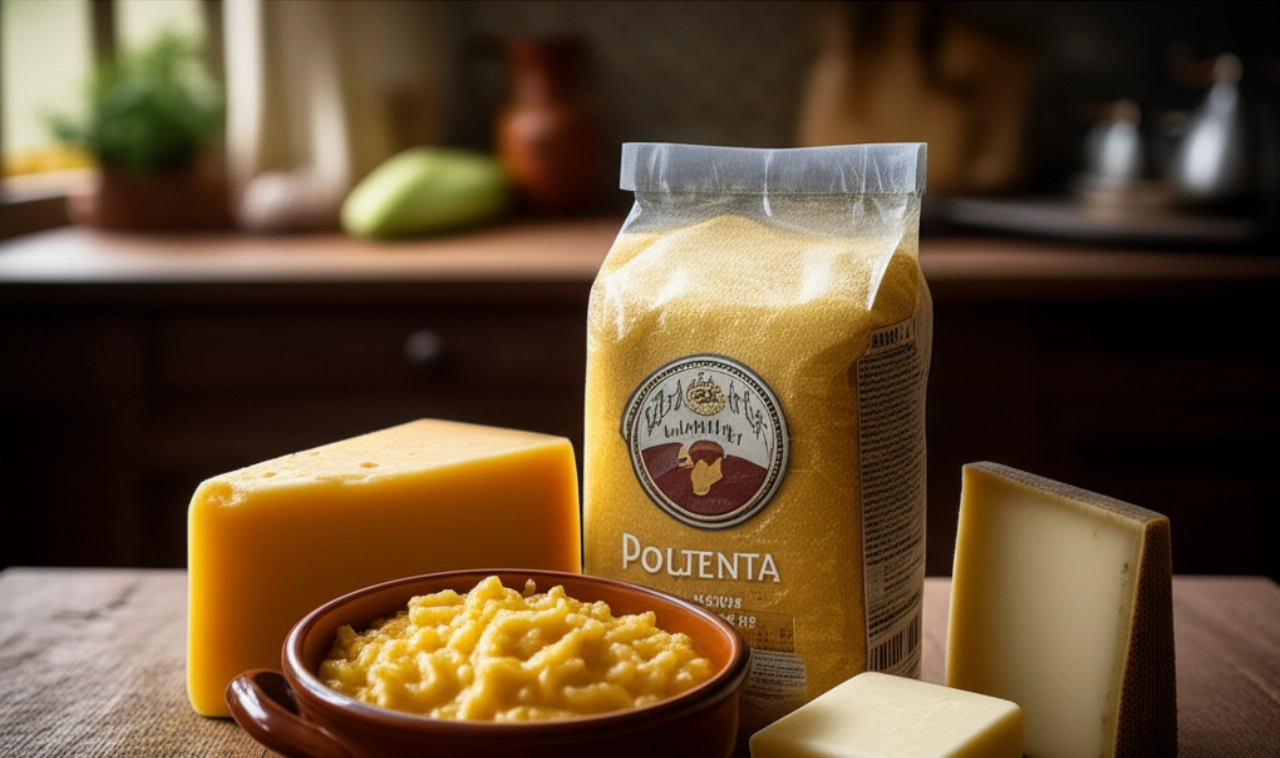
3 Common Mistakes That Ruin Polenta Taragna (and How to Avoid Them)
I understand, sometimes polenta seems like an enemy. But with these tips, you'll avoid the most common pitfalls.
- Lumps, Enemy Number One: The terror of every cook! Lumps form when the flour is not poured slowly and mixed vigorously. The secret is to pour the flour in a thin stream, stirring constantly with a whisk or wooden spoon until it thickens.
- Insufficient Cooking: Undercooked polenta is inedible; it has a floury taste. Polenta Taragna requires time, at least 40-50 minutes, to cook properly and develop its flavor. Don't rush! Patience is your best friend in the kitchen.
- Cheese That Doesn't Blend: Sometimes the cheese seems unwilling to melt or remains in pieces. This happens if you add it when the polenta is too hot or if you don't cut it into small cubes. Add it off the heat, stirring vigorously, and you'll see it melt into an irresistible cream.
The Magic Touch: My Grandmother's Secret for Foolproof Polenta
My grandmother, with her wise hands and lifetime of experience, taught me that polenta is an act of love. Her secret? Constant stirring and choosing the right pot. She always used a copper pot, which distributes heat evenly and prevents the polenta from sticking. But a thick-bottomed pot works perfectly fine too; the important thing is never to stop stirring, especially at the beginning. And then, the final touch: a sturdy wooden spoon, which allows you to feel the polenta thickening under your hands. This is the true secret for perfect, lump-free creaminess.
Let's Prepare Polenta Taragna Together: The Step-by-Step Guide for Guaranteed Success
Follow these steps calmly and confidently, and you'll bring a show-stopping dish to the table.
- Prepare the Flours: In a bowl, thoroughly mix the coarse cornmeal (bramata) with the buckwheat flour. This will help distribute the two flours evenly and prevent lumps.
- Boiling Water: In a copper pot (or a thick-bottomed pot), bring the water (or broth) with the coarse salt to a boil. When it's boiling vigorously, slightly lower the flame.
- Pour in the Flours Gradually: With one hand, begin to pour the flour mix in a slow, thin stream, while with the other hand, stir vigorously and constantly with a whisk or wooden spoon. This is the crucial moment to avoid lumps. Continue stirring until the polenta begins to thicken and you no longer see any lumps.
- Slow and Constant Cooking: Once the polenta has thickened, lower the heat to minimum and continue to stir regularly, every 2-3 minutes, for at least 40-50 minutes. You'll see the polenta detach from the sides of the pot. The longer it cooks, the more digestible and flavorful it will be.
- Prepare the Cheese: Meanwhile, cut the Branzi cheese (or your chosen alternative) into small cubes.
- Perfect Creaming (Mantecatura): When the polenta is cooked, remove it from the heat. Immediately add the cubed cheese and butter. Stir vigorously and decisively until the cheese and butter are completely melted and blended, making the polenta incredibly creamy and stringy.
- Serve Immediately: Polenta Taragna should be enjoyed piping hot! Serve it directly from the pot or pour it onto a wooden board.
Tips and Frequently Asked Questions about Polenta Taragna
Here are some answers to the questions I'm most often asked, to clear up any doubts you might have.
- Can I use only cornmeal? No, for Polenta Taragna, the presence of buckwheat flour is essential, as it gives it its characteristic color and flavor. Without it, it would be a simple yellow polenta.
- What cheese can I use if I can't find Branzi? The best alternatives are Casera, Fontina, or a good, not-too-aged Taleggio. The important thing is that it's a semi-hard cheese that melts well and has a distinct flavor.
- How can I avoid lumps? The secret is to pour the flour in a very slow, thin stream while stirring vigorously and constantly with a whisk or wooden spoon. Don't rush this initial phase!
- Can I prepare Polenta Taragna in advance? Polenta Taragna is at its best when freshly made. If you absolutely must, you can prepare it a little in advance and reheat it in a bain-marie or in a pan with a little milk or broth, stirring well to make it creamy again.
- How can I store it? If there's any left over, you can store it in the refrigerator for 2-3 days in an airtight container. You can also cut it into slices and heat it on a griddle or in a pan for a crispy version.
There you have it! Now you no longer just have a recipe, but all the secrets to bring to your table a dish that tastes of mountains, tradition, and pure pleasure. A truly warm embrace, perfect for cooler evenings or a festive family lunch.
Don't be afraid to experiment. Cooking is an act of creativity and love. But start with this solid base, and you'll see that applause won't be lacking. Your Polenta Taragna will be a guaranteed success, and your guests will ask you for the secret!
Have you tried our recipe? We're very curious to see your masterpiece! Leave a comment below, tell us how it went, or share a photo on Instagram by tagging @CercaRicette.it. If you loved this Polenta Taragna, you can't miss our recipe for Porcini Mushroom Risotto or a perfect main course like Brasato al Barolo. We're waiting for you in the kitchen!
